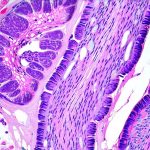Flow cytometry is an incredibly powerful technique used across diverse scientific disciplines – from immunology and cell biology to drug discovery and diagnostics. At its core, it allows us to rapidly analyze the characteristics of individual cells or particles as they flow single-file past a laser beam. The data generated isn’t simply ‘there’, however; it’s constructed from signals detected by various sensors, and this construction process is where opportunities for errors – what we call artifacts – arise. Understanding these artifacts is absolutely crucial to ensure the reliability of your results and prevent misinterpretations that could lead down incorrect research paths or flawed clinical assessments.
The challenge lies in the fact that flow cytometry data isn’t a direct representation of cell properties. It’s an interpretation, filtered through complex instrumentation and potentially influenced by numerous factors during sample preparation, acquisition, and analysis. Artifacts manifest as unexpected patterns in flow curves – the graphical representations of signal intensity versus event number – and can mimic real biological signals, leading to false positives or masking genuine findings. This article aims to equip you with a foundational understanding of common flow curve artifacts, how to recognize them, and strategies to mitigate their impact on your experiments. Recognizing these pitfalls isn’t about finding flaws; it’s about ensuring the integrity and trustworthiness of your data.
Common Flow Curve Artifacts & Their Origins
Flow curves are essentially histograms or dot plots displaying signal intensities. Artifacts can distort these representations, creating misleading impressions of cell populations and their characteristics. A frequent culprit is debris, which includes cellular fragments, aggregates, or non-cellular material present in the sample. Debris typically appears as low forward scatter (FSC) and low side scatter (SSC) events – meaning they don’t reflect light strongly in the same way intact cells do – but can still register a signal on fluorescence channels if antibodies have non-specifically bound to them. This can create ‘clouds’ of noise that obscure genuine signals from smaller or less abundant populations.
Another common artifact stems from doublets – two or more cells sticking together and being counted as a single event. Doublets exhibit higher FSC and SSC values than individual cells, and also display increased fluorescence intensity due to the combined signal from both cells. This can lead to misidentification of cell subsets or inflated estimates of expression levels. Aggregates – larger clusters of cells – behave similarly but are even more pronounced in their impact on scatter parameters. Beyond debris and doublets, instrument-related factors like photomultiplier tube (PMT) gain settings that are too high or insufficient compensation between fluorescence channels can also introduce artificial peaks or shifts in the flow curve, distorting your data’s accuracy.
Finally, non-specific antibody binding is a major source of artifacts. Antibodies can bind to Fc receptors on cells, or to other non-target molecules, leading to false positive signals. This is particularly problematic with fluorescently labeled antibodies and requires careful controls like isotype control staining and Fluorescence Minus One (FMO) controls which are discussed further below. The origin of these artifacts underscores the importance of meticulous sample preparation, optimized instrument settings, and appropriate gating strategies during data analysis.
Identifying Doublets & Aggregates
Detecting doublets and aggregates often relies on scatter plots – specifically FSC-A vs. FSC-H (Area versus Height) or SSC-A vs. SSC-H. Single cells will generally fall along a diagonal line, while doublets will deviate upwards due to their larger size and combined signal. Here’s how you can approach doublet discrimination:
- Plot FSC-A against FSC-H and look for events that are shifted higher than the main population of single cells.
- Similarly, plot SSC-A against SSC-H and assess for deviations from the single cell diagonal.
- Create a ‘doublet discrimination gate’ around the single cell population to exclude doublets from your analysis.
Aggregates will be even more pronounced in their deviation from the single cell line and may require a separate gating strategy to exclude them effectively. It’s vital to remember that doublet formation can be influenced by sample preparation methods, such as inadequate dissociation of cells or insufficient filtration. Proper tissue dissociation protocols and filtering samples through appropriately sized filters (e.g., 40µm or 70µm cell strainers) are crucial preventative measures.
Recognizing & Mitigating Debris Interference
Debris is often identified as events with low FSC and SSC, but it can still interfere with the analysis of genuine populations, especially those expressing low levels of target markers. A key strategy for minimizing debris interference is proper sample cleanup. This includes:
- Careful cell washing to remove any unbound antibodies or cellular debris from the sample.
- Filtration through a cell strainer to eliminate larger particles that aren’t cells.
- Density gradient centrifugation can be employed in some cases to separate cells from debris based on density differences.
During gating, establish clear boundaries to exclude low FSC/SSC events representing debris. Be cautious about including these events in your analysis as they can skew the results and lead to inaccurate conclusions. Another useful technique is to include a ‘debris control’ – a sample containing only debris – to help you identify and gate out unwanted particles effectively.
Using Controls for Accurate Data Interpretation
The use of appropriate controls is paramount in flow cytometry, particularly when identifying and minimizing artifacts. Isotype controls are antibodies of the same isotype as your primary antibody but lack specificity for any cellular target. They help determine the level of non-specific binding to cells and allow you to set background fluorescence thresholds accurately. Fluorescence Minus One (FMO) controls contain all fluorophores used in a panel except one, allowing you to define boundaries for positive and negative populations without interference from spillover between channels.
These controls are essential when setting up compensation – the process of correcting for spectral overlap between different fluorophores. Incorrect compensation can lead to artificial shifts in flow curves and misinterpretation of data. Finally, unstained cells serve as a baseline control to establish the level of autofluorescence inherent to your cell population, which can sometimes mimic low-level signal from specific antibodies. By carefully incorporating these controls into your experimental design, you can significantly improve the accuracy and reliability of your flow cytometry results and confidently differentiate between genuine biological signals and artifacts.





















